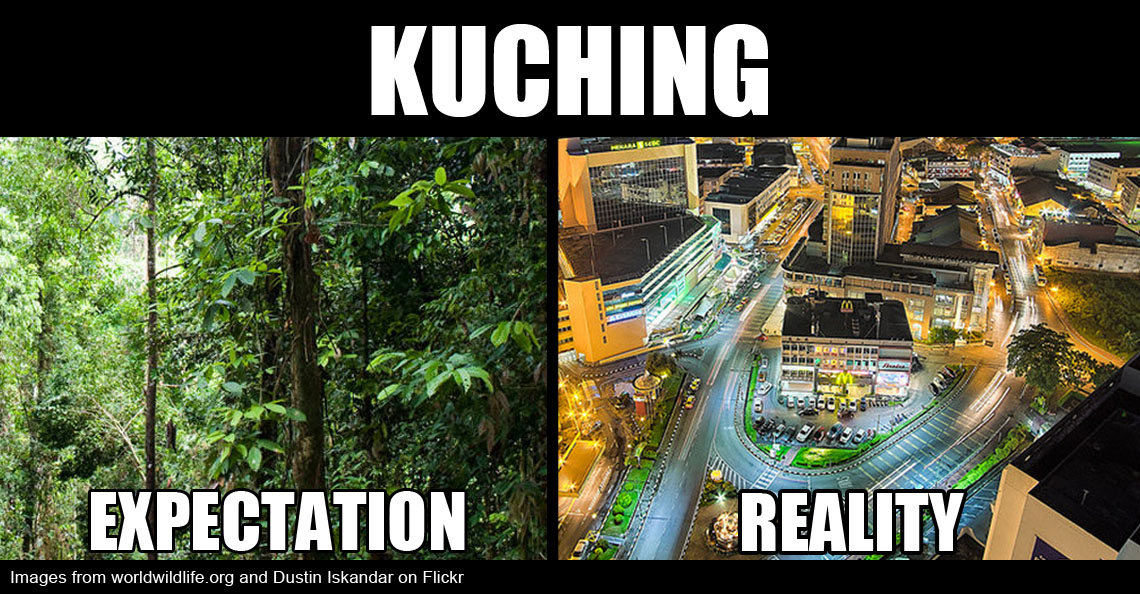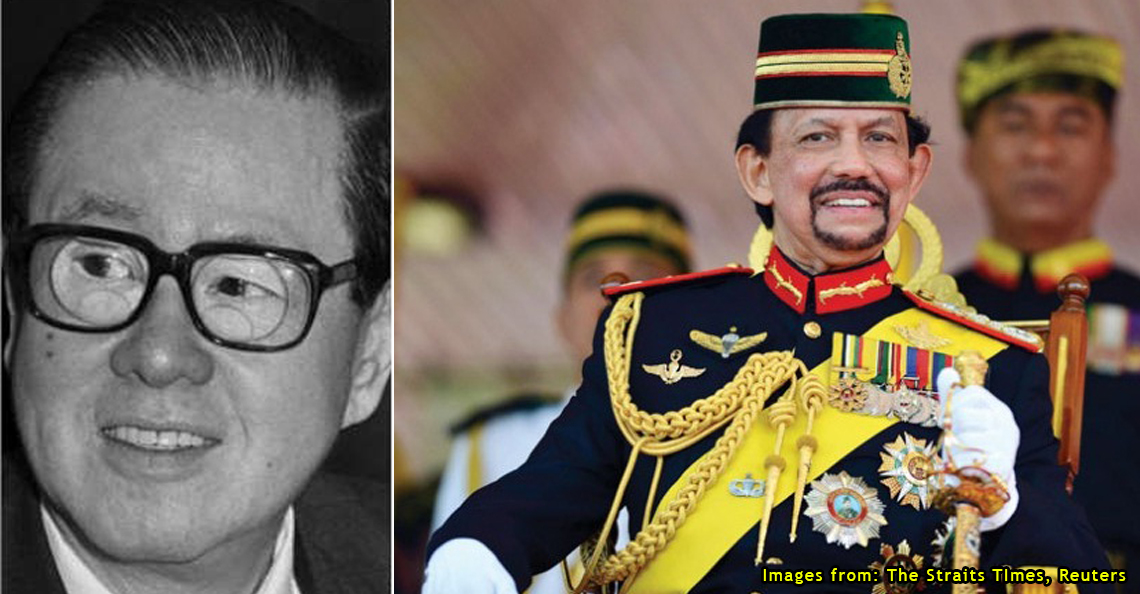Here’s 5 lost kingdoms of Sarawak that you’ve probably never heard of
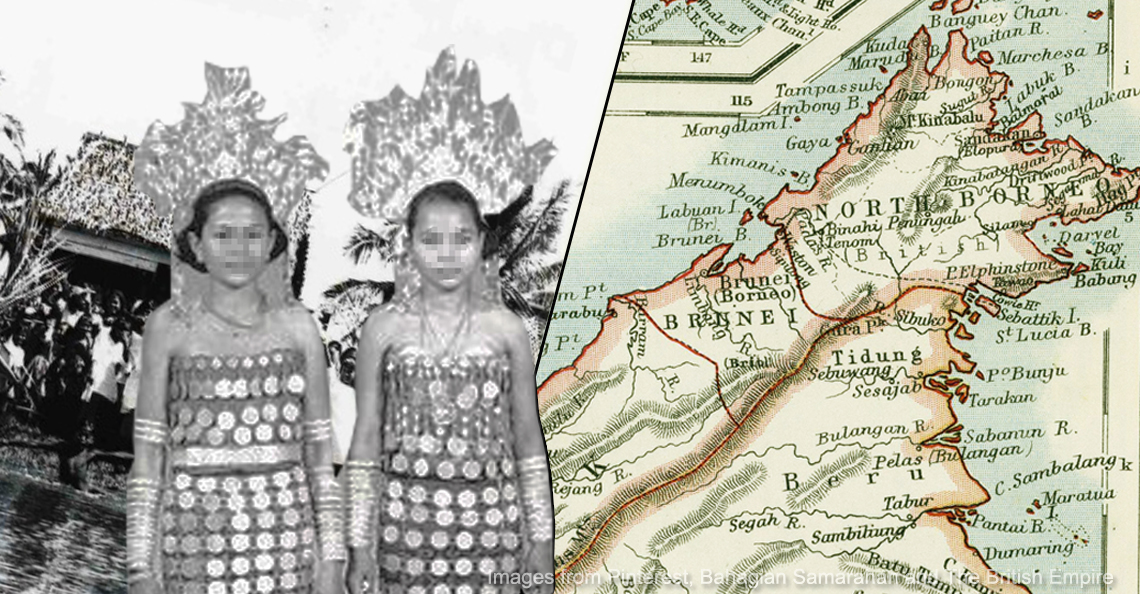
- 3.8KShares
- Facebook3.7K
- Twitter21
- LinkedIn16
- Email24
- WhatsApp95
(Artikel asal ditulis dalam BM. Klik sini untuk baca!)
When we talk about lost kingdoms, you’d probably gonna think of some angmoh finding some random civilization like this…

…or if you were a gamer back in the early 2000s like our boss, you might recognise this…
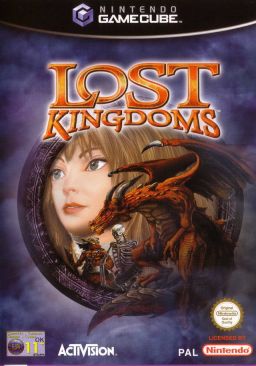
But what if we tell you that a local study actually found not one but FIVE lost kingdoms in Sarawak? This is apparently in addition to the already well known Malay kingdoms that we’ve learnt in our Sejarah lessons like Srivijaya, Langkasuka and Majapahit among others.
They’re known as the lost kingdoms because back when they were first discovered by historians, there may not be enough evidence to prove the existence of these kingdoms. And just so you know, historical evidence is important as it allows historians to have more insight into the past and, probably, propose theories as to what may have happened at the location.
So without further ado, let’s travel back in time and visit the five lost kingdoms in Sarawak.
Disclaimer: This article is heavily based on a research paper called The Heritage of the Early History of Sarawak: The Five Lost Kingdoms by historian Sanib Said of Universiti Malaysia Sarawak.
1. The Bo-Ni Kingdom was founded by a guy with… 14 WIVES?!
The first kingdom is called Bo-Ni, which was what Brunei was known as, according to Chinese sources la. In his study, Sanib mentioned that the history of Brunei goes waaaaaayyyyy back to the 9th century. And there are several versions as to how this kingdom started.
One of them is a story of a guy who traveled to the Brunei Bay, married 14 women in that area and built a kingdom there. And it gets weirder from there.
In this kingdom, the guy who married 14 women didn’t end up crowned as the king of the states. As it turns out, he had 14 children with those women (soz Sanib didn’t quite mention which child came from which mother), who would later become saparadians aka head of prefectures. And together, these saparadians then built a state by the river.

So back in those days, a community would pick leaders among older people. And, in this case, it was only natural that Awang Alak Belatar, who was the eldest among the 14 saparadians was crowned as the king of the state. Awang Sama’un, who was the second eldest saparadian, on the other hand, was elected to be the commander.
And it was believed that he was a great commander. Sooooo great that a poem was even named after him – Syair Awang Sama’un. Oh, but that’s not all.
As it turns out, there was a story written about his bravery in the Hikayat Sama’un (yea, it was even named after him… again!). Just in case you can’t imagine how big of a deal this is, this book was pretty famous in the Malay Archipelago at that time. It was translated in the Sunda language in the Javanese Island and it consists of other stories too!

These literature pieces were evidence that prove the existence of the Bo-Ni kingdom and its 14 prefectures.
Besides that, Chinese texts seem to have stated that this kingdom existed since the 860 AD. In the texts, there were mentions of the names of the Bo-Ni kings like Hiangta (977 AD), Si-li-ma-je (1082 AD) and Hsiawang (1408 AD), among others. And Chinese texts were said to have been relied on to construct the history of early Brunei.
An old Javanese text called Nagarakrtagama also added that the Bo-Ni kingdom was later ruled by the Majapahit.
2. The Santubong kingdom, which was later known as Sawaku
If the name Santubong rings a bell, that’s probably because you’ve heard about the legend of the Santubong princess.
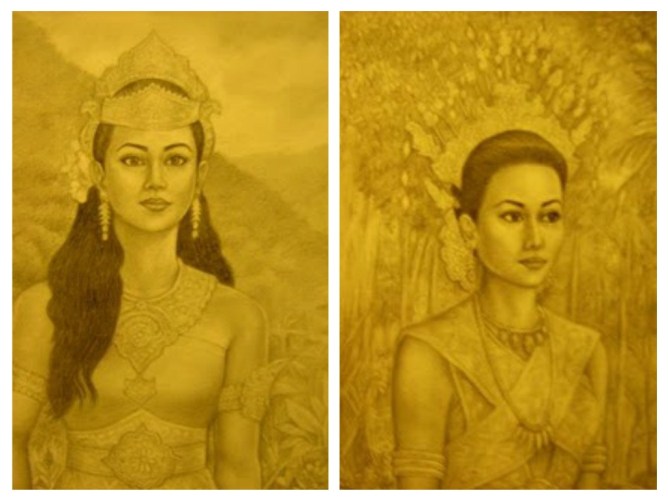
While we can’t really confirm that the legend is true, it is confirmed that the Santubong kingdom did exist.
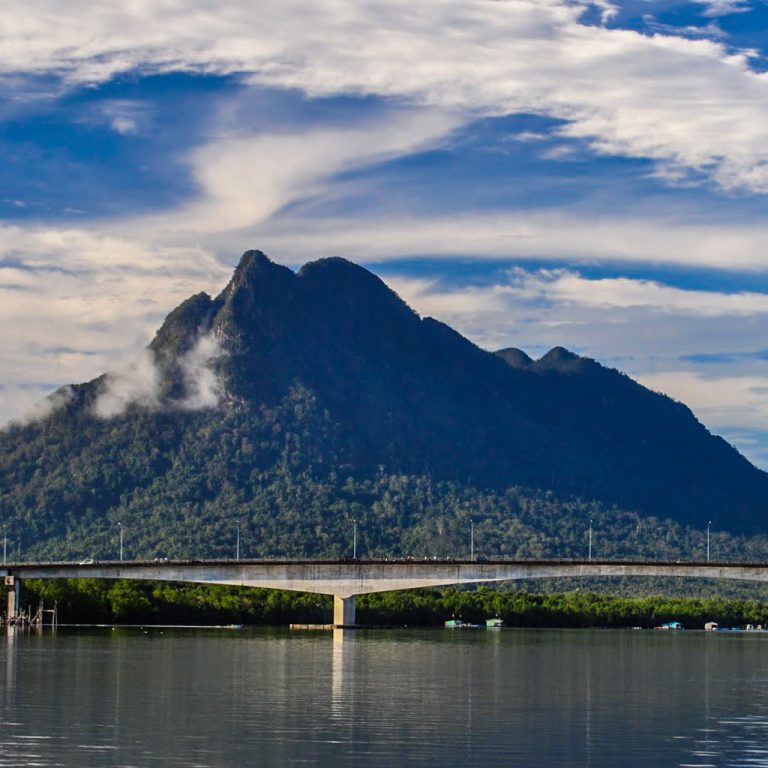
And this could be supported by the artifacts that were found in that area. Some of the artifacts found in this area are:
- Golden stones – evidence found by James Brooke that may prove that Indians from India may have lived there
- Thousands pieces of Chinese ceramics – collected by Sarawak Museum in 1914
- 40,000 tonnes of iron
A closer look at these artifacts brought historians to a conclusion that Santubong may have existed since the 7th century and has remained in power til the 10th or 14th century. As a matter of fact, historians also concluded that Santubong may have been a port city when they discovered iron there.
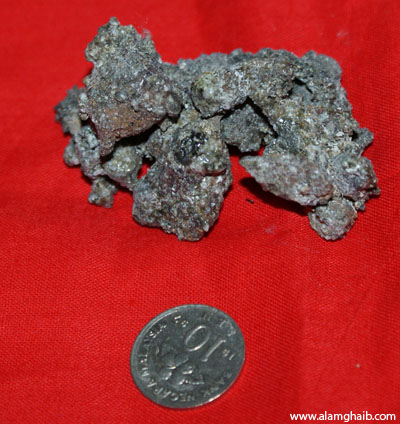
All these natural resources that Santubong had managed to catch Majapahit’s attention and this pretty much caused the Santubong kingdom to be conquered by the Majapahit kingdom. This was when Santubong’s name was changed to Sawaku (aka Sarawak).
3. The Old Samarahan Kingdom where 80,000 pieces of ceramics were found
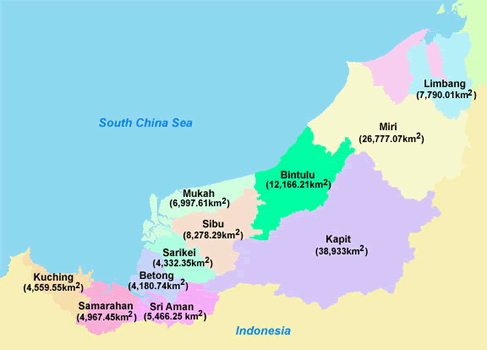
In Sarawak, there are two rivers that are deemed important to the state – the Samarahan river, where one of the national river basin is located and Batang Sadong, where Malaysia’s longest bridge spanning over a river is located. But, back then, both places weren’t just mere rivers la.
According to the Silsilah Raja-Raja Brunei (Genealogy of the Sultans of Brunei), they were actual states of their own. And they’re pretty legit considering how James Brooke and British Consul, Spenser St John, discovered a statue that was made with elements from the Hindu religion at that area in the 1850s.
Besides that, historians also found 14th and 15th century Chinese ceramics in the Sadong valley, which pretty much proves the existence of a settlement in the beach and rural areas. In certain areas, historians even found 79,754 pieces of pots and hundreds of other things like beads, coins and gold.
What differs this area to others was the discovery of a 143 pieces of Sawankhalok ceramic, which came all the way from… THAILAND!
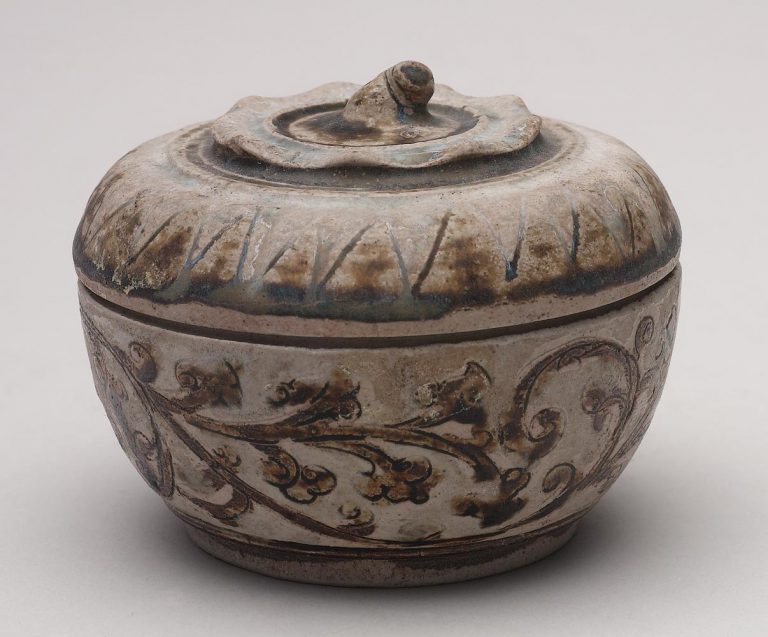
However, unlike the other kingdoms, there isn’t any historical records of the Old Samarahan kingdom in any of the Chinese or even Javanese texts. The only thing that historians can rely on tho are the Hindu relics and ceramics found in Sungai Samarahan and Batang Sadong.
4. The Kalaka Kingdom was ruled by two sisters
If you’re into#girlpower, then the Kalaka kingdom would intrigue you, because it was ruled by… two sisters!

Well, this is pretty legit because there’s a poem in the Syair Tarsilah Negeri Saribas, which specifically state the names of the sisters (hint: the names are mentioned in the last line of the poem #yourewelcome).
Terhenti dulu kisah itu
Tersebutlah pula habar suatu
Di Negeri Kalaka’ habarnya tentu
Dayang Hubu’ Dayangnya Ruku
Besides this poem, traces of the Kalaka kingdom can also be seen in the Genealogy of the Sultans of Brunei. According to the text, the kingdom was once a gift to Brunei by the Johor govt and it became Brunei’s priority.
And just with other kingdoms, the Kalaka kingdom, which was located near the Sadong valley (yea, where the Old Samarahan kingdom was once located), was home to various artifacts as well. Historians have found 9,469 pieces of Chinese ceramics including the Sawankhalok ceramics.
The ceramics were said to be made sometime in the 16th and 17th century, showing that the Kalaka kingdom may not be as old as the other kingdoms we’ve mentioned earlier.
5. The Saribas Kingdom that was founded by a refugee from Brunei
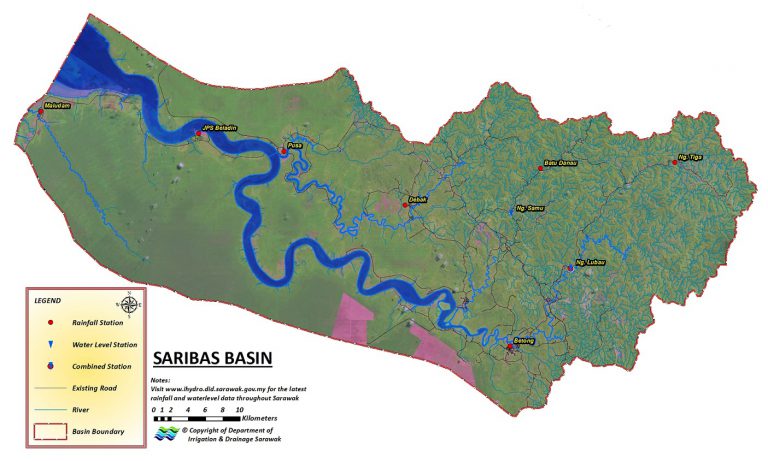
So, according to Sanib, the Saribas kingdom may have not existed until the mid-17th century. This is because there was no historical records on this kingdom prior to that in the Javanese text, Nagarakrtagama, which cited the existence of its neighbouring kingdom, Kalaka.
And, unlike other kingdoms we mentioned earlier, this lost kingdom is super interesting because the story of how it was started could be found in a manuscript that went MISSING for quite some time.
Ok la, the manuscript, Syair Tarsilah Cetera Abang Gudam dan Temenggong Qadir Negeri Saribas, wasn’t exactly missing but it was lost and somehow found again in 2002.

Anyways, the manuscript tells a story of a refugee from Brunei named Pengiran Temenggong Abdul Qadir. He has a pretty daughter, Dang Chi’, who was abducted by the Sultan.
Pengiran Temenggong, who ran to Batang Saribas, eventually built a city in Tandang Sari. This was where he met the supposed prince of Pagaruyung, Dato Gudam, who was pretty famous in Saribas and Brunei. See, Dato Gudam was supposed to ascend as the king of Pagaruyung la but he kinda failed at that so, he decided to travel from Sumatera to Saribas for business purposes.
When Dato Gudam arrived at Tandang Sari to meet Pengiran Temenggong, he was asked to save Pengiran Temenggong’s daughter by bringing her out of the Sultan’s palace.

And boi did Dato Gudam succeed in saving Dang Chi’. As a reward, Pengirang Temenggong married his daughter off to Dato Gudam and they lived happily ever after. He then led Saribas and passed on the administration to the descendants called Abang. They held positions with titles like Datu Patinggi, Datu Bandar, Aulaksamana, Datu Imam and Datu Hakim in Batang Saribas valley.
With all the stories of these lost kingdoms…
Maybe it’s time for Sarawak’s lost kingdoms to be included in our Sejarah books
So, truth be told. We can’t include EVERY SINGLE DETAIL about these lost kingdoms in this article. Well, we could but you’d be reading a whole Sejarah textbook here. But if you think the stories of these kingdoms are interesting enough, well, wait til you read the full version of these stories in Sanib’s research paper.
Honestly, before writing this story, we weren’t even aware of these kingdoms because they were not even included in Sejarah lessons in the first place (duh, CILISOS they’re called the lost kingdoms anyways #ihatecilisos). So, it’s pretty interesting to know that Malaysia has old kingdoms, which was founded as far back as the 7th century, with intriguing stories of their own.
And the discovery of these kingdoms is made possible by the efforts made by historians and archaeologists who found and studied the artifacts in those historical areas.

Having said that, with all the sources available, let’s just hope that we’d be able to see the inclusion of the story of Sarawak’s lost kingdoms in Sejarah books the way stories of other Malay kingdoms have been widely told all this while.
PS: If you’d like more stories like this, please subscribe to our HARI INI DALAM SEJARAH Facebook group
- 3.8KShares
- Facebook3.7K
- Twitter21
- LinkedIn16
- Email24
- WhatsApp95

